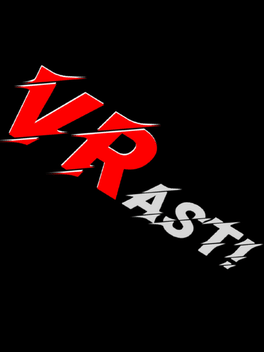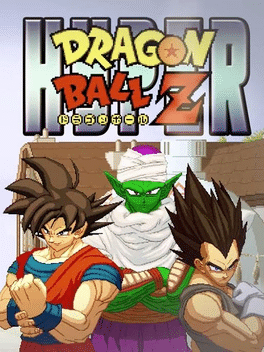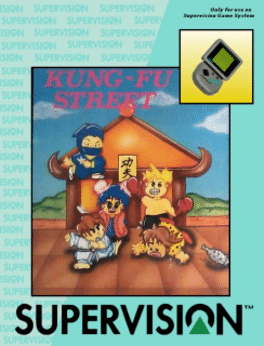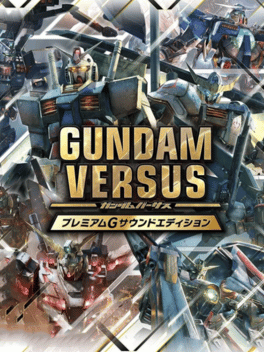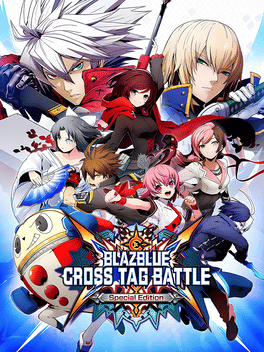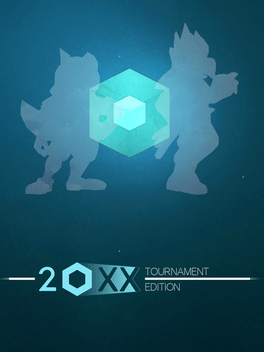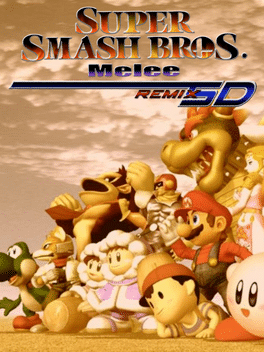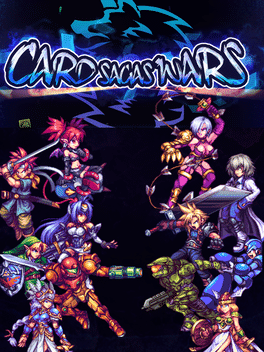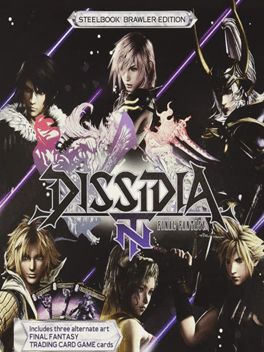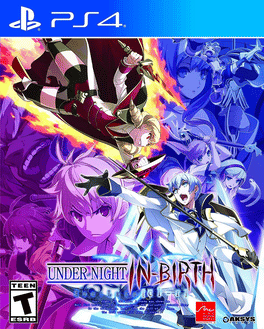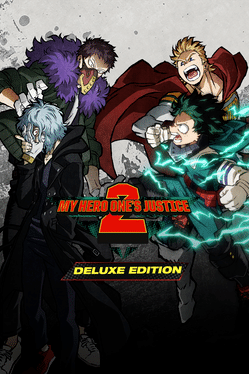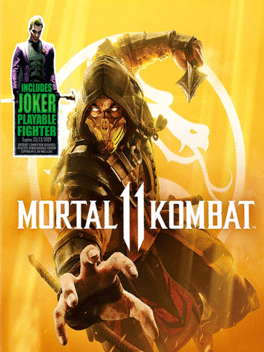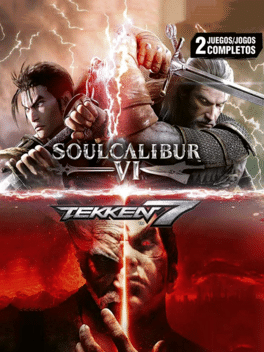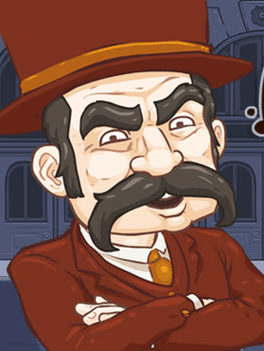Most Popular Nintendo 64 Games - Page 75
-
Battle of Angels
2020
Battle of Angels
2020
The video game where you play as an Angel. Your mission is to transform this city ghetto into a lovely-looking paradise, But, how can you make this happen, you ask? You must confront the existing spirit power there and defeat him. Presently, he rules this city with drug cartels, cocaine lords and much more. You must defeat the one who controls these city structures inside the boxing ring at the Roman Colosseum. -
Vrast!
2021
-
Hyper Dragon Ball Z
2014
Hyper Dragon Ball Z
2014
Hyper Dragon Ball Z is a freeware game developed from the M.U.G.E.N engine by fans of the anime dubbed "Team Z2". The gameplay focuses on the mechanics inspired by Street Fighter and Darkstalkers with other fighting games thrown into the mix (like Marvel VS Capcom and The King of Fighters). Initially beginning as a simple brand of Dragon Ball Z characters to go against the traditional Dragon Ball Z characters introduced into M.U.G.E.N. so far (overly flashy, broken, suffering heavily from Sturgeon's Law, etc.), the Z2 team of Balthazar (idea conceiver) and Cybaster (primary coder) expanded to include various others, including inspiring some other smaller projects in the team's honor. It's come to the point that a game based on the Z2 characters was realized, and the roster expanded from Goku and Vegeta to many more. -
Kung-Fu Street
1993
-
Kamen Rider: Climax Fighters - Premium R Sound Edition
Let the survival of the fittest Rider Battle commence! Witness the Rider’s individuality go against another’s characteristics through the renewed action fighting game. -
Mobile Suit Gundam: Extreme Vs. Maxi Boost ON - Collector's Edition
This edition includes the following PS4 Game: Mobile Suit Gundam: Extreme VS. MaxiBoost ON [Premium Sound Edition], HG 1/144 Extreme Gundam & Eclipse F Parts (EX VS. 10th Anniversary Color Ver.) Gunpla figure -
Mobile Suit Gundam: Extreme vs. Maxi Boost ON - Premium Sound Edition
Set in the globally iconic Gundam universe, Mobile Suit Gundam Extreme VS. Maxiboost ON enables players to take two-on-two player-versus-player combat to the next level with Mobile Suits spanning the entire breadth of the franchise’s history. In total, Mobile Suit Gundam Extreme VS. Maxiboost ON features 183 playable units from 36 different Gundam iterations, each with unique abilities designed to match any fan’s personal playstyle. Players can choose between three different EX Burst Systems—Fighting Burst, Extend Burst and Shooting Burst—to coordinate with allies and lay waste to all that stands—or fly—in their way. Mobile Suit Gundam Extreme VS. Maxiboost ON offers one-to-four player online co-op and player-versus-player play. -
BlazBlue: Cross Tag Battle - Special Edition
2018
An unrivaled clash of explosive proportions! The beloved BlazBlue franchise Crosses universes, Tags in fan favorites, and Battles it out in BlazBlue: Cross Tag Battle! Created through an all-star collaboration between BlazBlue, Atlus’ Persona, French Bread’s Under Night In-Birth, and Rooster Teeth’s hugely popular RWBY web series, Cross Tag Battle celebrates the fighting genre for pros and newcomers alike! Engage in fast-paced 2v2 team battles filled with the craziness you’ve come to love from BlazBlue, with all the tight mechanics, smooth gameplay, and gorgeous 2D graphics you expect from Arc System Works. Choose from an eclectic cast of over 20 fighters. Jin Kisaragi, Rachel Alucard, Yosuke Hanamura and more are ready to join the fray! -
20XX: Tournament Edition
2015
THE YEAR IS 20XX Welcome to the next generation of Super Smash Bros. Melee. 20XXTE is a highly-polished Melee mod designed to completely replace vanilla Melee in any setting, home or tournament. It can be run on any Gamecube or Wii with nothing but a memory card and a special save file - no hacking or homebrew required. Enter up to 8 characters on the Name Entry Screen. Save replays to watch and record later. Customize your menu music to set the mood between matches. Level up your swag factor by choosing from any of 18 custom shield colors. These and more have been coded specifically for 20XXTE, with usability in mind - you'll know how to use it from the second you get your hands on it. -
Melee: SD Remix
2015
Melee: SD Remix
2015
Melee: SD Remix is a gameplay mod of Super Smash Bros. Melee to make it more balanced. The top tier characters Fox, Falco, Sheik, Marth, Jigglypuff, and Peach were unchanged, while all other characters were given a somewhat large number of buffs and an extremely small number of nerfs. The remaining characters were modified according to three principles: to emphasize existing character strengths, to increase mobility, and to uphold a character's "style". Version 3.2 has been released in August 2015. -
Card Sagas Wars
2018
Card Sagas Wars
2018
Card Sagas Wars was a PC game being developed by Ahruon and Orkimedes. The game utilizes the M.U.G.E.N engine, but unlike other MUGEN games all of the sprites are made entirely by scratch. This not only gives the game a uniform and "professional" artstyle, but it also allows for better control of balance. Development for the game started in 2005, but was halted for several years before being quietly discontinued. In June of 2018, Ahuron released a prototype of the game from 2011 that featured the four marquee characters. At least two updates featuring more characters and stages are planned for release soon after, but beyond that, the game will receive no further updates or bug fixes. -
Pokémon: Type Wild
2006
Pokémon: Type Wild
2006
Pokémon: Type Wild is a fan made fighting game made by former animators of the Pokémon Anime. The game consist of nine Pokémon, each with their own move-set. These Pokémon are: Gengar, Snorlax, Combusken, Blaziken, Gardevoir, Breloom, Swalot, Lopunny, and Lucario. -
Super Smash Bros. Ultimate - Piranha Plant
2019
A DLC character for Super Smash Bros. Ultimate. The only DLC character not included in the Fighter Passes Piranha Plant was used as an early adopter bonus for Super Smash Bros. Ultimate, available for free to anyone who registered the game to their account before January 31st 2019. It was released for free to owners of the game on January 29th and was made available for purchase on February 1st. -
Dissidia Final Fantasy NT: Steelbook Brawler Edition
In partnership with Team Ninja, Square Enix presents DISSIDIA FINAL FANTASY NT as the next evolution in squad-based brawlers. -
Under Night In-Birth Exe:Late[cl-r] - Collector's Edition
2020
This edition includes the following: - Collector's Box - Under Night In-Birth Exe:Late|cl-r| - 96 page Full-Color Artbook - Soundtrack CD - Londrekia Keychain (size: 3in) -
My Hero One's Justice 2: Deluxe Edition
2020
The Deluxe Edition includes: - Full game - Season Pass - In-game item: Ribbit Ribbit Set -
Gentlemen Dispute
2013
Gentlemen Dispute
2013
Settle this dispute like a gentlemen! Bend time to your will to smack the hat off your opponent’s head and prove your superiority!

